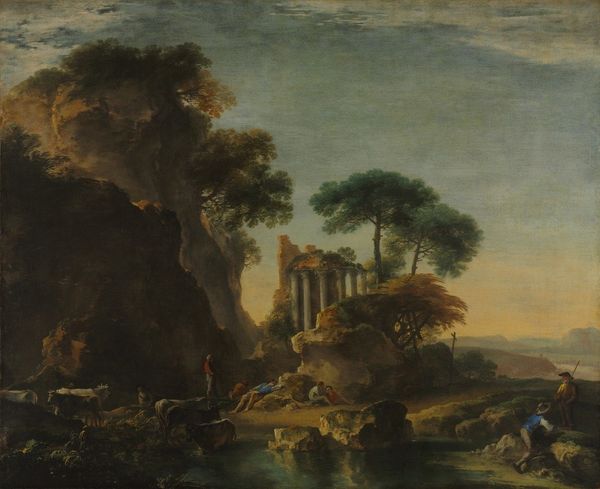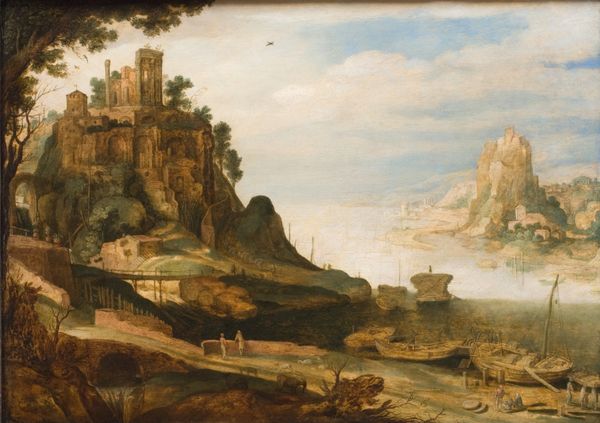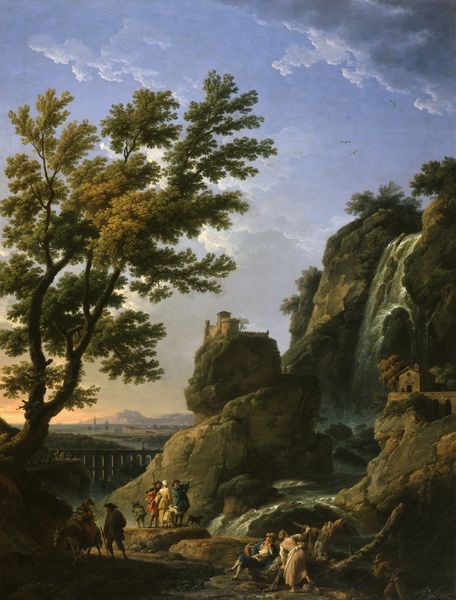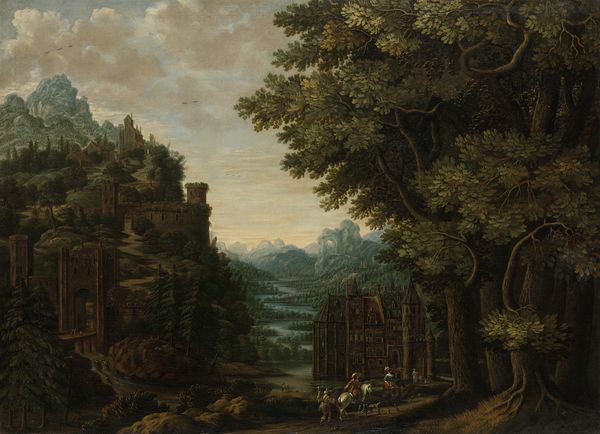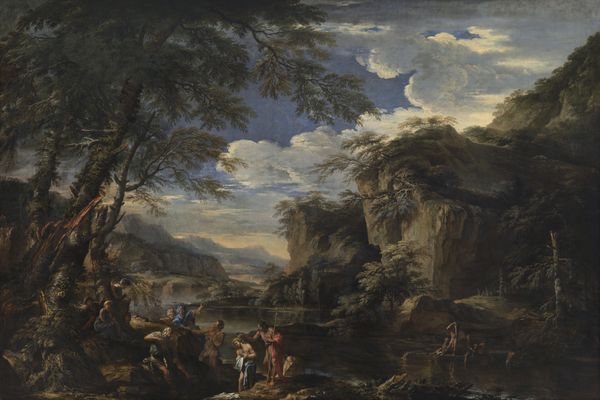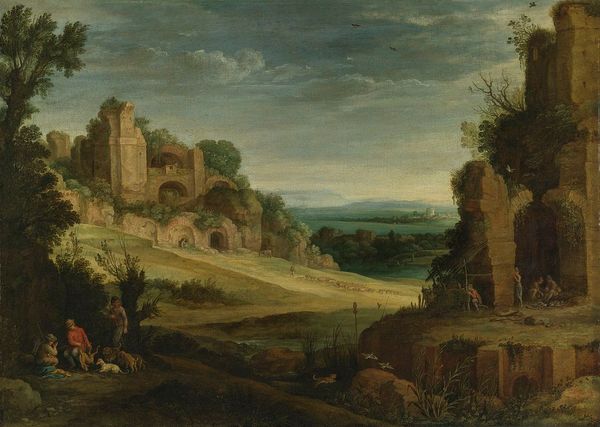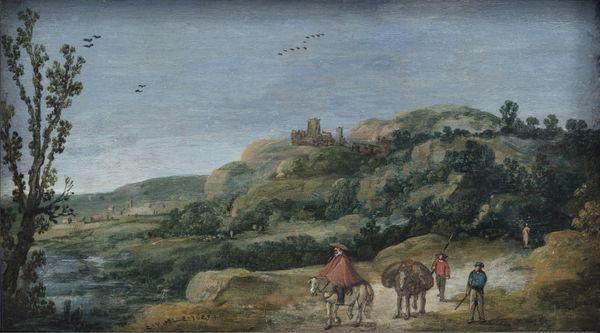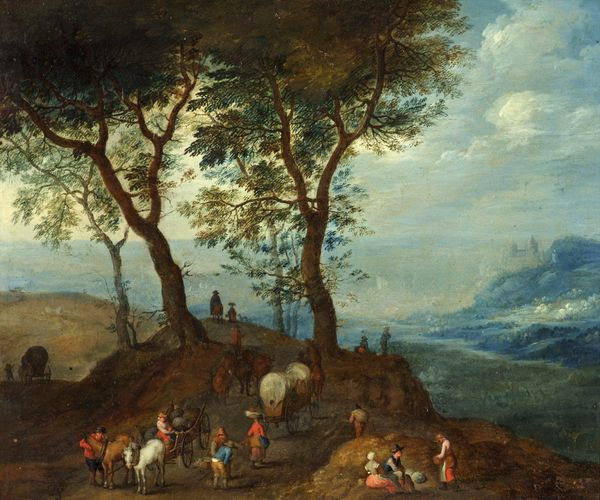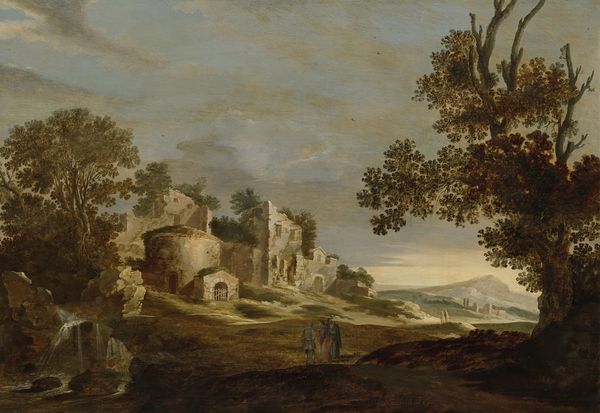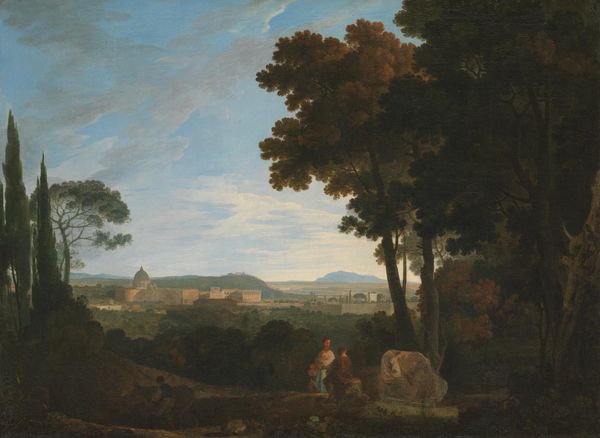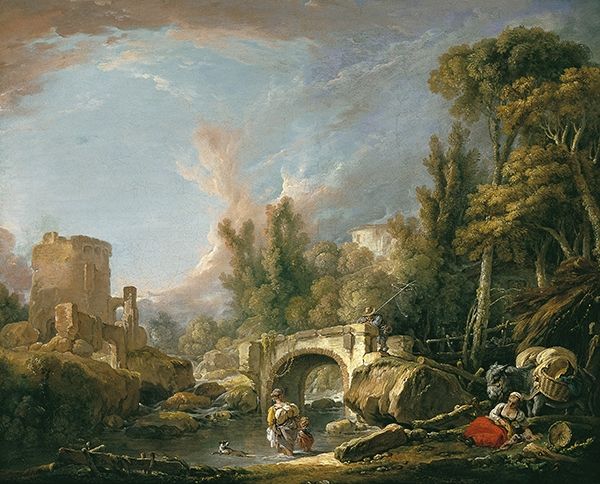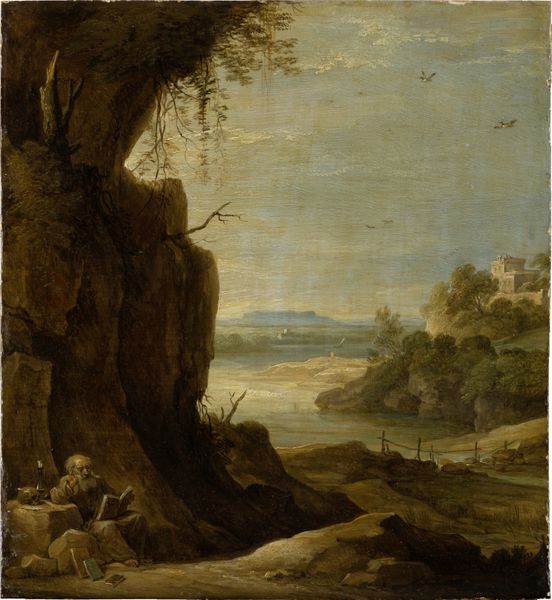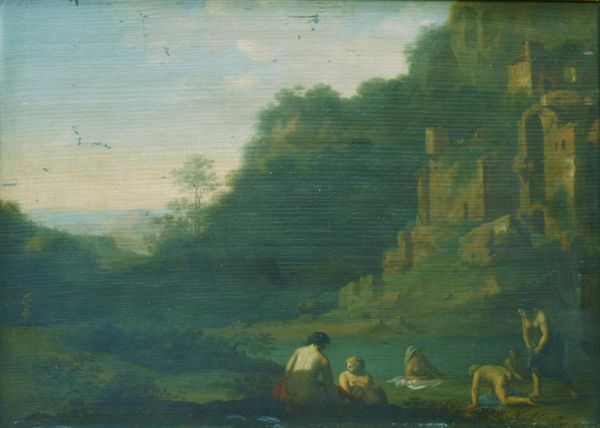
oil-paint
#
allegory
#
baroque
#
oil-paint
#
landscape
#
oil painting
#
history-painting
Copyright: Public domain
Curator: What a dreamlike scene. The lighting is utterly captivating. Editor: Indeed. This is Adam Elsheimer’s "Mercury and Herse," painted around 1605. It's an oil painting that showcases a fascinating blend of landscape and narrative. Curator: The landscape dominates, doesn't it? It’s not merely a backdrop; the figures seem integrated into the terrain. The artist is creating meaning through the formal aspects of space and light, specifically the subtle transitions from dark foreground to illuminated distance, effectively dividing the canvas and the eye. Editor: The choice to render this mythological scene—Mercury's encounter with Herse—in a small, intimate format feels deliberate. It democratizes classic myths by making them feel relevant and part of common human experience, placing them in a natural setting easily inhabited. In truth, Elsheimer was something of a trailblazer, he introduced these fresh landscape components and scaled history-painting to cabinet size. Curator: I’m especially drawn to Mercury. Observe the manner in which his figure contrasts with the darker regions. He serves as the compositional and thematic lynchpin around which all of the formal aspects cohere into an allegory, an attempt, no doubt, to synthesize classical with modern sensibilities. Editor: From an institutional perspective, consider how displaying art such as Elsheimer's in private galleries or public collections has, historically, served to elevate landscape painting to something considered higher than mere background filler for religious iconography. The painting now stands on its own terms; one must consider this sociopolitical element when engaging in analysis. Curator: Very true. The atmospheric perspective and how the artist plays with light are really worth studying further to any observer attempting to discern not just the content of the picture but the structural relationships of art objects. Editor: The work's accessible human drama also highlights a need at that point in history: a more personalized, approachable encounter with ancient narratives. We can only speculate if that accessibility contributes positively when assessing artistic or academic quality in general! Curator: What remains long in the memory is how the scene seems both timeless and intimately accessible because of how the elements cohere compositionally. A very interesting piece to be able to consider in this manner. Editor: Precisely, making Elsheimer's impact on Baroque art profound because, socially, it allowed audiences a different sort of interaction that resonated more with real life, and a growing emphasis on observation of, and interaction with, nature itself.
Comments
No comments
Be the first to comment and join the conversation on the ultimate creative platform.
